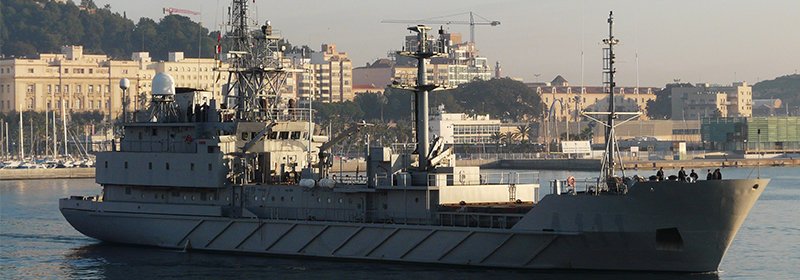Mastery of the electromagnetic spectrum is one of the least known yet most important factors in ensuring the operational capabilities of an army and the security of any country. The Directorate-General for Armament and Material (DGAM) has awarded Indra a contract to develop and test, within the Santiago national electronic defense program, the new generation of electronic intelligence systems that facilitate the detection and gathering of strategic information to guarantee Spanish Armed Forces’ access to and use of the electromagnetic spectrum.
Whenever a crisis arises anywhere on the planet and an international mission is activated to stabilize the area, all the prior work to gather intelligence on the electronic systems used by the adversary becomes one of the most important assets in guaranteeing the army’s superiority.
This is the information that ships, aircraft and terrestrial platforms use to ensure that their radars, sensors and communication systems retain their capabilities, despite the enemy’s attempts to interfere with their operations, and, in turn, restrict the adversary’s capabilities. Identifying the electromagnetic footprint of the radars used by each ship, aircraft and ground station is of vital importance in detecting threats, preventing attacks and choosing the most appropriate protective countermeasure.
However, the constant evolution of the enemy’s systems and the revolution brought about by their digitization obliges the Armed Forces to constantly update their capabilities. To this effect, Indra is addressing the development of electronic intelligence (ELINT) systems that enhance the Spanish Navy’s ability to detect, classify and extract the intelligence from the signals emitted by the radars of other armies.
The system incorporates the latest advances in digital signal processing to enable the Spanish Navy to adapt to any operational environment with greater flexibility. It’s a system that secures a better performance, larger range and greater sensitivity and allows for more streamlined data collection, simultaneously covering a wider bandwidth to detect the low-probability-of-intercept radars that some platforms used to try to hide. Their smaller size and lower energy consumption also reduce the Army’s logistical footprint, facilitating longer and uninterrupted operations.
The demonstrator to be delivered by Indra and installed on one of the Spanish Navy’s ships incorporates the technological blocks that serve as the basis for the development of the future electronic intelligence capabilities of the Army and the Air and Space Force, thus making the best use of the available resources and moving towards systems that can be integrated with more seamless data sharing.
Cutting-edge technology on a global scale
Indra has become one of the major world leaders in the field of electronic defense. The work carried out over recent decades within the Santiago national electronic defense program has enabled the company to develop some of the most innovative and sophisticated solutions available on the market. These systems have attracted the interest of some of the world’s most modern navies, including those of Norway, Germany, Italy, India, South Korea and Mexico.
In the aerospace field, Indra, together with its European partners, has developed the DASS Praetorian system that protects more than five hundred Eurofighters in seven countries. It has also developed the sophisticated electronic defense pod carried by the Spanish F18 and it leads some of the European R&D projects that are shaping the future of this technology.
Furthermore, the role it plays as one of the three national coordinators of the European NGWS/FCAS program, heading the international development of the new generation of sensors set to enter service in the coming decades, together with its position as one of the world’s leading radar manufacturers, makes it one of the companies that best understands the new technologies that armies will be facing in the coming years and the most effective techniques to detect and counteract them.

